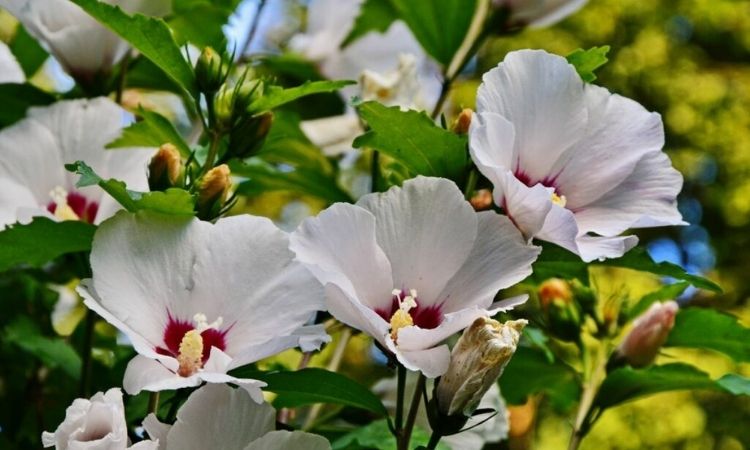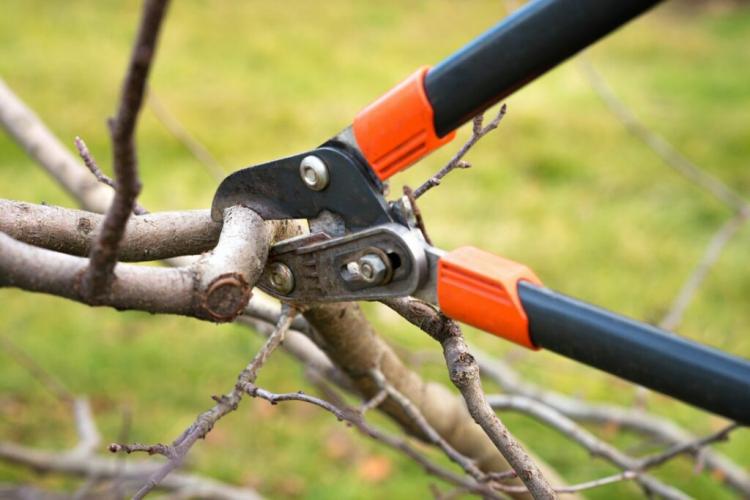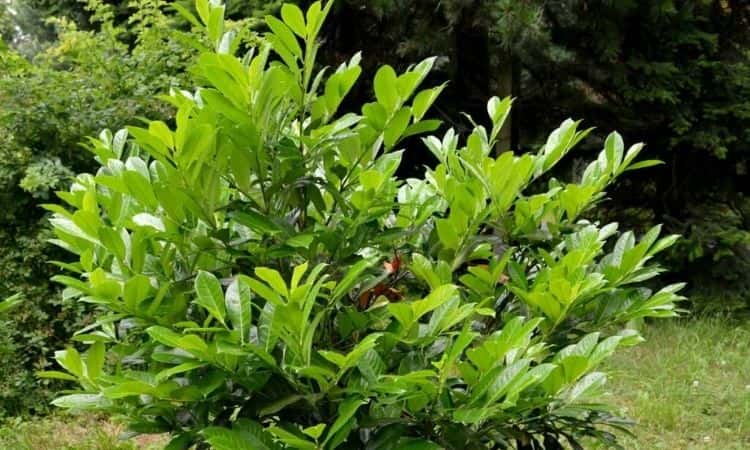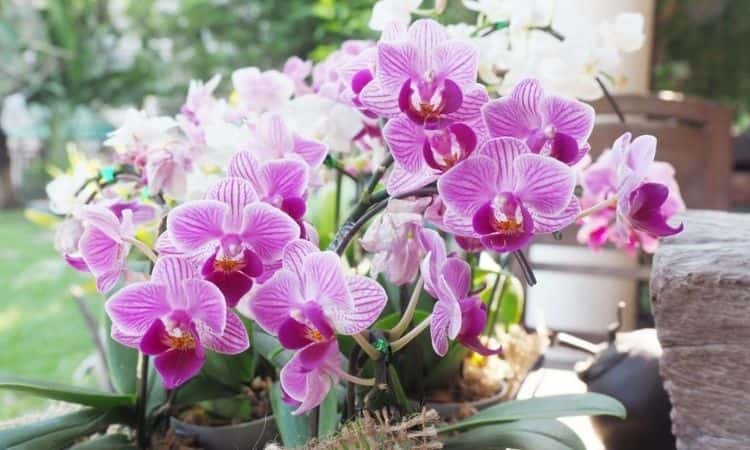Bonsai Soil: How To Choose The Right Substrate For The Bonsai Tree
We show which soil is best suited for bonsai and why normal substrate is not an option. After all, the small tree has special requirements. Bonsai grow in a small bowl that does a big job. With its rather sparse content, it has to provide the tree’s livelihood. Because the plants draw their water and nutrients from the soil in the shell and find support.
It is not true that less soil also requires less work or accuracy. On the contrary – due to the small volume of the soil there is hardly any room for errors. This is not only reflected in the care of the miniature trees but also the choice of the right substrate for your bonsai.
You should consider this before buying bonsai soil
Table of Contents
Without the right choice of soil, you will be unlikely to succeed in keeping your bonsai healthy for years. Bonsai soil should have certain properties: The irrigation water must drain off well to avoid waterlogging. Nevertheless, water should be able to be stored well. The content of organic matter should not be too high so that the structure remains stable for years and the roots get enough oxygen.
Also, bonsai garden art is not limited to just one type of plant. Many species with different demands on the soil conditions can be trained to become bonsai. Depending on the type of bonsai, a small variation of the bonsai soil may be necessary. With this article, we will help you choose a suitable soil for your botanical work of art.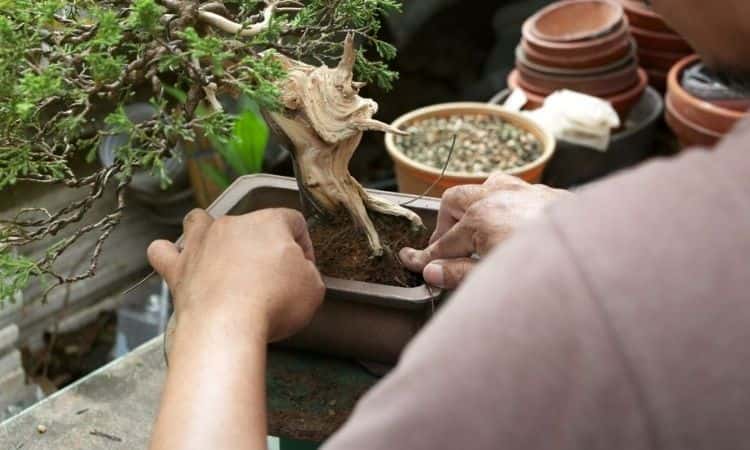
Why does the bonsai need special soil?
To be able to speak of a bonsai, the miniature trees must be cultivated in a bowl that suits them. This means that the roots of the plants – unlike in their natural environment – only have very limited space available.
This spatial limitation ensures a strong growth inhibitor, which is what makes the miniatures possible in the first place. With the right choice of coarse-grained, structurally stable bonsai soil, you can ensure adequate root aeration and the right balance between water storage and drainage even after years of shell culture.

This is what the perfect bonsai soil looks like
Because of the culture in the bowl, you should pay a lot of attention to the right soil for your bonsai. The requirements of different bonsai species vary. In general, however, the substrate used should have the following properties:
- Good nutrient storage.
- Fast-drying of the surface.
- Well ventilated due to coarse grain size.
- Sufficient water storage despite good water drainage.
- Good structural stability, which prevents the substrate from collapsing.
- High buffer capacity against fluctuating pH values.
- Low organic content.
To exhibit these characteristics, bonsai soils contain ingredients such as pumice, lava grit, zeolite, expanded clay, and only a small admixture of bark humus or peat. Also, Akadama earth, dried volcanic ash clay from Japan, is often included because of its beneficial properties. Special bonsai soils for plants that prefer a low pH value contain Japanese Kanuma, a granulate of volcanic origin, which is lighter and more acidic than Akadama.
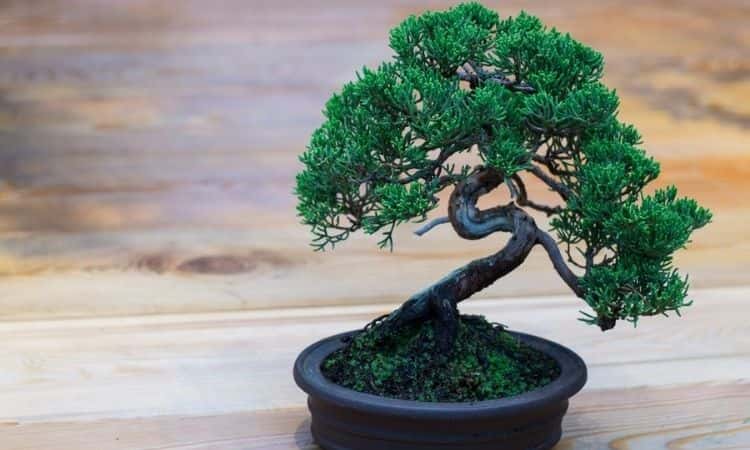
Also from Japan comes the Kiryu earth, which is extremely dimensionally stable and stores water very well. It is mainly used for juniper and pine bonsai. Also, compost can be contained in the smallest portions as nutrient storage, however rather in the production of the bonsais and less in the further cultivation. Below are some possible ingredients and their properties.
| Ingredient | Properties |
|---|
| Akadama Earth | Structural stability, water storage, ventilation |
| Bimskies | Mineral, volcanic powder, water and nutrient storage, structurally stable |
| Expanded clay | Water storage, drainage, ventilation, structurally stable |
| Humus | Nutrient storage, non-structurally stable, variable pH |
| Fine gravel | Drainage and ventilation, structurally stable |
| Perlite | Drainage and ventilation, structurally stable |
| Sand | Quick-drying, structurally stable, drainage |
| Kanuma | Structural stability, ventilation, low pH |
| Kiryu | Structural stable, water storage, very good ventilation |
| Gravel | Drainage, structurally stable |
| Sound | Nutrient storage, water storage |
| Clay | A mixture of clay and sand |
| Peat | Water storage, ventilation, low pH, not quite structurally stable |
| Coconut substrate | Depending on the fineness for ventilation or as a water reservoir, not completely structurally stable |
| Zeolite | Nutrient and water storage, structurally stable |
In the right combination, the above-mentioned substances can be used as a substrate for your bonsai. The exact composition depends on the species you want to grow into a bonsai. For example, plants from tropical areas with high humidity such as fig species (Ficus) or Fukien tea (Carmona microphylla) prefer to bed in soil with good water-storing properties. Species that are sensitive to waterlogging enjoy particularly good drainage.
The condition and age of the plant also influence the correct composition. Sick or young plants need a coarser grain than weakly growing and older plants because in the loose structure the roots can spread faster. Roughly speaking, the right soils for bonsais can be derived by dividing them into needle and leaf-bearing species. In addition, you should also consider whether you are dealing with an indoor or an outdoor bonsai. Since this is only a rough classification, there is a lot of room for a dispute about the most suitable mixture.
A good choice for many beginner bonsai is basic bonsai soil. These high-quality mixtures are well suited for many types of bonsai or can be optimized by adding other ingredients.
Mixing Bonsai Soil
Here are some promising recipes for the gardener who wants to create his own bonsai soil.
The following mixtures are recommended for conifers:
- 2:2:1 Sand, clay, and peat
- 1:1:1 Akadama, pumice gravel, and lava granules
- 1:1:2 Kiryu earth, pumice gravel, and akadama
With deciduous trees or indoor bonsais, a high water storage capacity is important, but the trees are usually satisfied with little drainage. For example, the sand portion goes down and the clay portion goes up.
Good mixtures for deciduous trees are for example these:
- 2:2:1 peat, clay, and sand
- 2:1:1 Akadama, pumice gravel, and lava
- 1:1:1 Akadama, Kanuma and pumice gravel
For the bonsai on the windowsill, mixtures like these are suitable:
- 2:1:1 Akadama, hummus, and fine gravel
- 1:1:1 Earth, peat, and pumice gravel
If you want to plant your bonsai in a substrate that is precisely adapted to the species, you should first consider the needs of the plant and then properly adjust the mixing ratio or add other ingredients. Suggestions for the choice of substrate for the most popular room and garden bonsai can be found here.
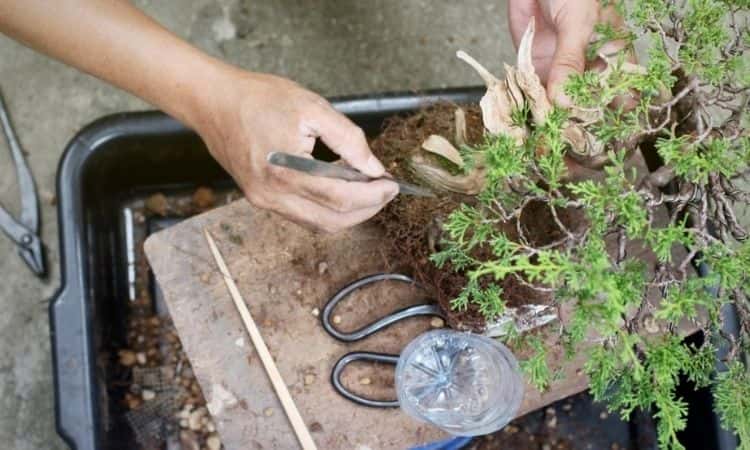
Buy Soil For Bonsai
An easier way to find the right substrate is to use universal basic bonsai soils, which can be adapted with some additives if necessary. It will not always be necessary to mix in additional ingredients if less special bonsai are grown. However, those who dare to grow somewhat trickier bonsai species should inform themselves about their soil requirements.
Starting from such basic bonsai soil mixtures, perlite, gravel, sand or expanded clay can be used to improve the aeration, for example, but this also reduces the water storage capacity. The water storage capacity can be increased with clay, fine coconut fiber, peat, or bark humus. Clay and ripe compost can be mixed in to store nutrients – but caution is advised: Compost is not structurally stable for a long time so that the substrate will sag and aeration deteriorates.


